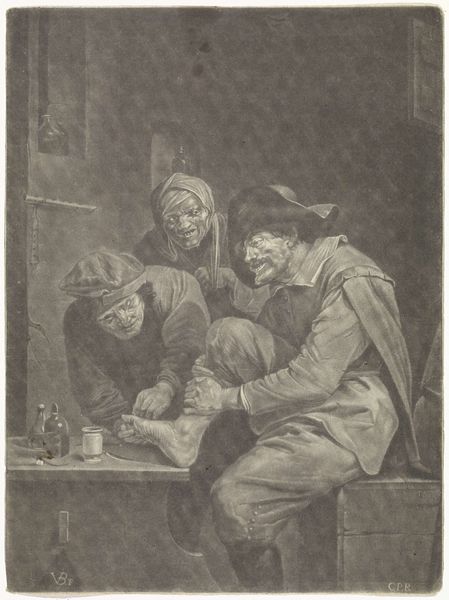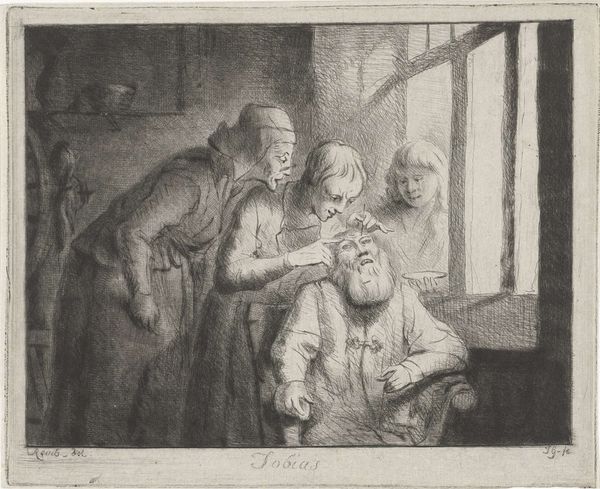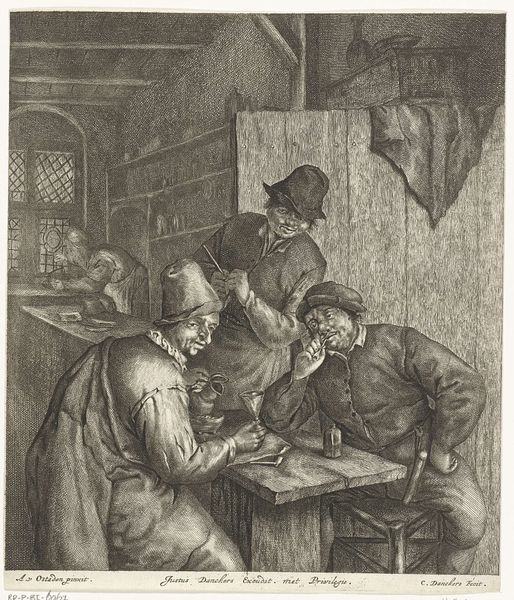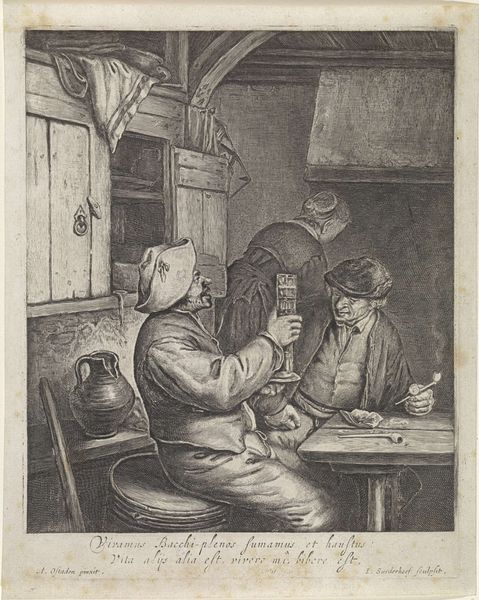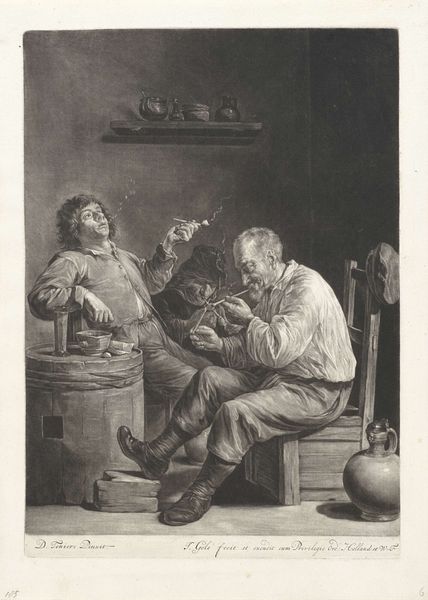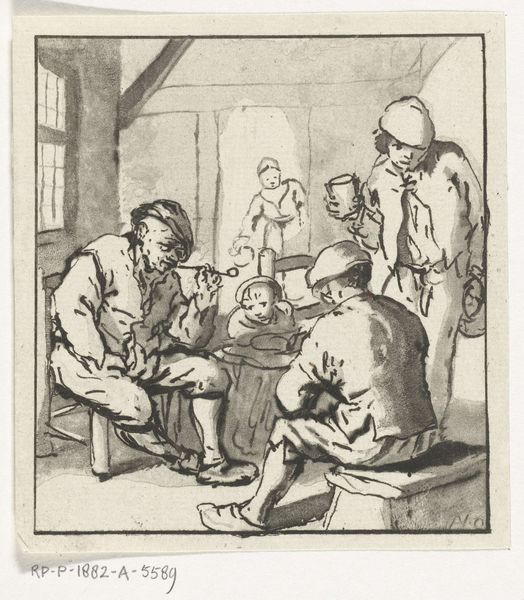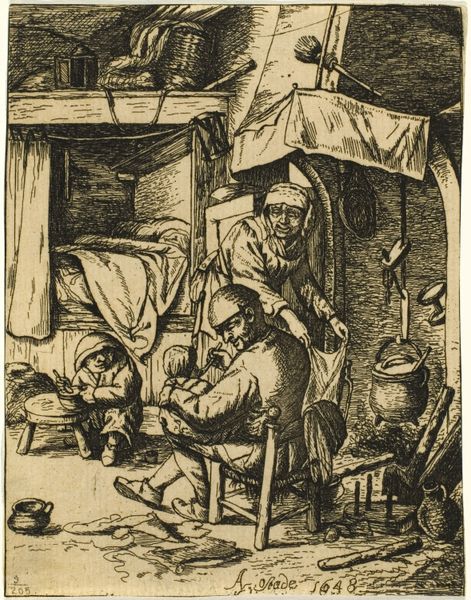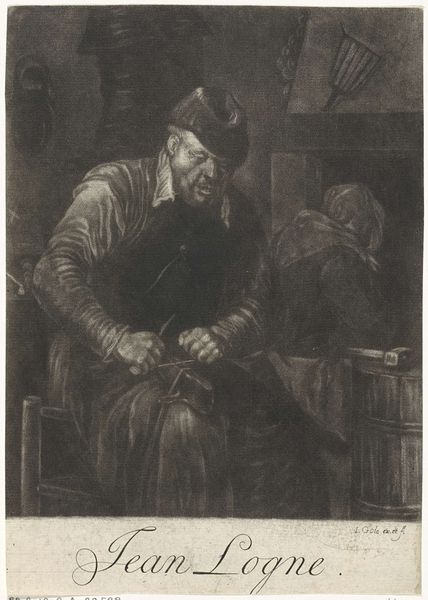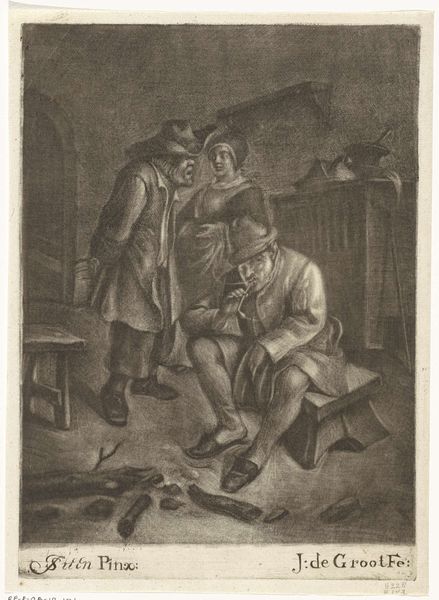
print, etching
#
narrative-art
#
dutch-golden-age
# print
#
etching
#
figuration
#
genre-painting
#
realism
Dimensions: height 153 mm, width 129 mm
Copyright: Rijks Museum: Open Domain
This is "Smaak," made by Cornelis Dusart in the late 17th century, using etching and engraving on paper. Dusart used these printmaking techniques to render a scene of everyday life. If you look closely, you can see the fine lines created by the engraver's tool, which define the forms and textures. The hatching and cross-hatching give depth to the composition. Dusart's skill as a draughtsman is evident in the detailed portrayal of the figures, their clothing, and the objects around them. Printmaking like this allowed for images to be reproduced and disseminated widely. In its own way, it was a form of mass production, making art accessible to a broader audience than paintings. It speaks to the rise of a market economy, where images and ideas could be circulated as commodities. "Smaak" isn't just a picture; it's a testament to the era's changing modes of production and consumption. It reminds us that art is deeply intertwined with the social and economic forces of its time.
Comments
No comments
Be the first to comment and join the conversation on the ultimate creative platform.
